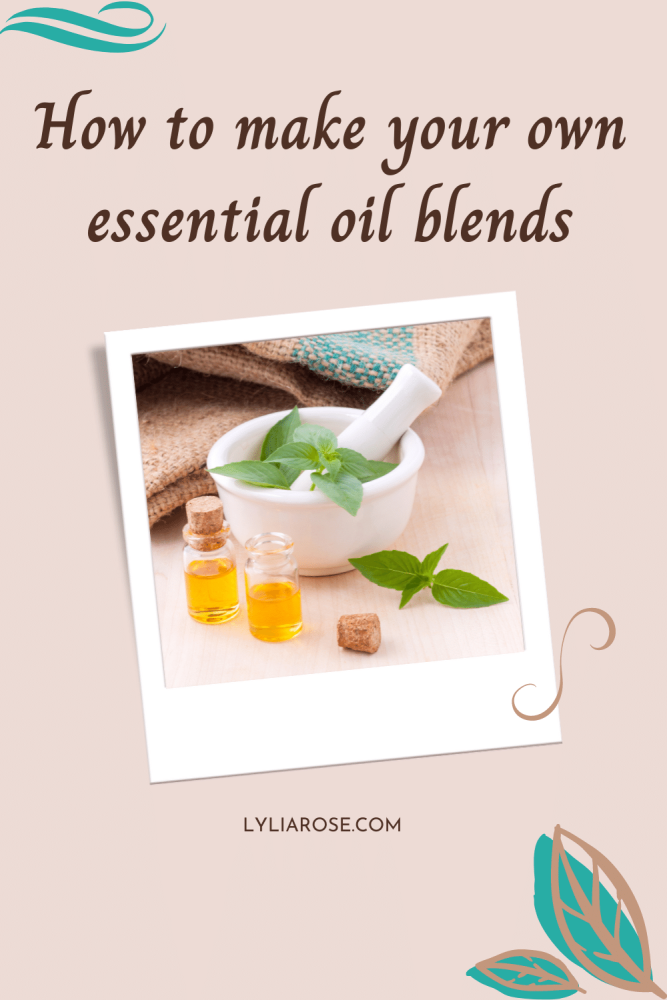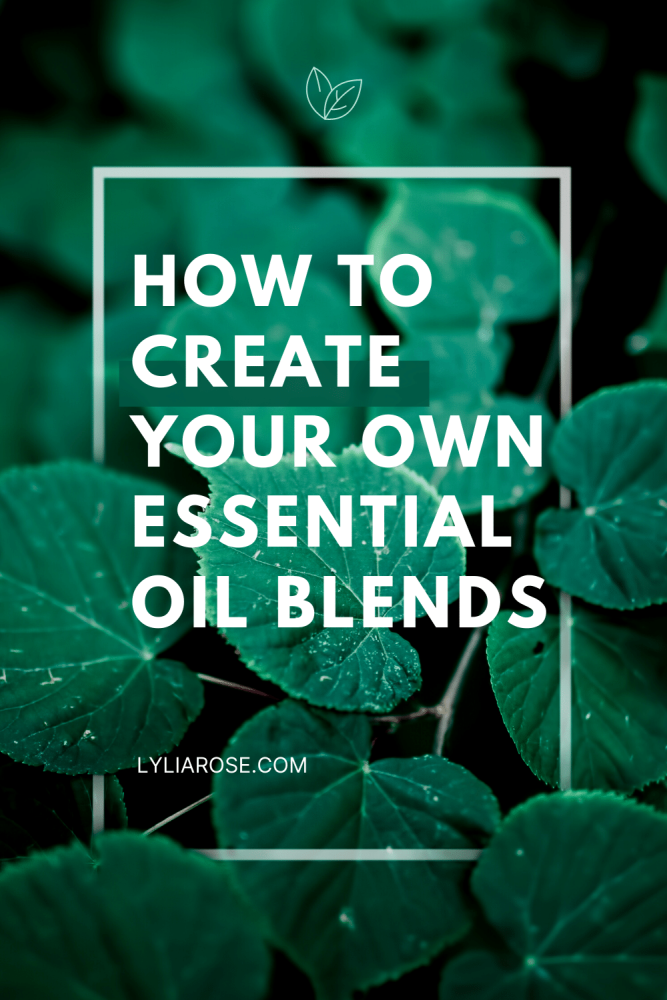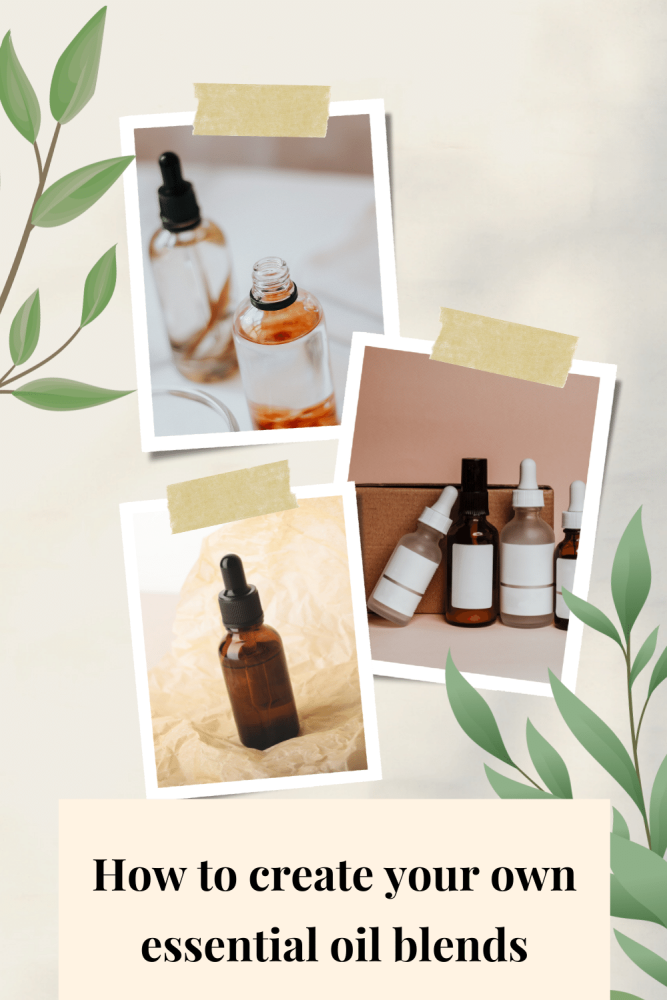How To Make Your Own Essential Oil Blends
Posted on
Essential oils are a popular natural remedy for a variety of health and wellness needs. These oils are not just a trend: they have been used by many cultures for centuries and they can be used in so many ways. You can buy them at the store or create your own blends using different kinds of oils. Using essential oils, you can create your own customised essential oil blends to address specific needs. Blending essential oils yourself could help to save money in comparison to buying readymade blends as you'll be able to buy your ingredients in bulk and make a saving.
In this article, we will discuss the benefits of essential oils, as well as how you can use them to create your own personalised blends that will help you maintain a healthy lifestyle.

What are the benefits of essential oils?
Essential oils are all-natural substances that are extracted from plants, flowers, fruits, and other organic materials. They are used in aromatherapy and for medicinal purposes to help with a variety of ailments. Essential oils can also be used around the home.
The benefits of essential oils can be seen in many different ways. For a start, they provide a natural remedy for those who wish to use natural methods when it comes to health and wellness.
There are many benefits both physically and mentally of essential oils to the human body. They can be used to relieve stress and anxiety, improve moods, promote wellness, and so much more. Certain studies have even found that they may reduce pain or improve sleep quality. They are often used in essential oil diffusers to release the scent into the air for aromatherapy purposes.
How to create your own essential oil blends
There are a number of ways to create your own essential oil blends. One way is to create a blend with the same proportions of oils in order to have a balanced scent. Another option is to combine oils that complement each other in order to achieve a specific goal, such as relaxation or energy.
The best way to create your own essential oil blends is by using a blend of carrier oils. Carrier oils are the base oils that you use in the blend.
For example, let's say that I wanted to create a blend with lavender and peppermint. I would mix them together with my carrier oil of choice, which could be coconut or grapeseed oil. You can experiment with different combinations of oils and find out what you like best!
Here are some steps for creating your essential oil blend at home:
Step 1: Choose your oils.
Choose from a variety of oils, each with their own properties and benefits. You can also mix them together or use them individually for different purposes. Some of the most popular essential oils for blending include lavender, rosemary, peppermint, tea tree oil and eucalyptus oil.
Step 2: Choose a carrier oil or base oil.
Carrier oils are used as a base for mixing essential oils with water or alcohol to create an aromatherapy blend. Carrier oils are vegetable oils that act as a base for your blend and provide the desired consistency and dilute the essential oils. It's important to use high-quality carrier oils for this process, as they will determine the quality of your final product. Examples are coconut oil, jojoba oil, almond oil
Step 3: Measure and mix your oils
The next step is to combine all of the ingredients into a glass bottle with a dropper cap and blend for about 30 seconds. Make sure that you label it clearly and store it in a cool dark place. The most common way for people who are not experienced with making their own blends is using recipes from other people on sites like Pinterest or YouTube. There are also tons of books available in bookstores about how to make your own essential oil blends and which oils work best for specific purposes.
Here is a list of some of the most popular essential oil blends:
-
Eucalyptus and peppermint: This blend is good for respiratory problems like colds and coughs. It also helps relieve pain from headaches or sore muscles.
-
Lavender and rosemary: This blend is good for calming down an anxious mind or relaxing a tired body before bedtime.
-
Lemon and lime: This essential oil blend has a natural, refreshing scent that can help to reduce mental fatigue and promote mental clarity.
-
Lavender and peppermint: this blend is perfect for those who are feeling anxious or nervous. The calming scent of lavender can help you relax while the invigorating scent of peppermint will give you a boost in energy.
-
Rosemary, lavender, and lemon: this is one of the most popular blends that people use to promote mental clarity, relieve tension headaches, and reduce muscle spasms. It also helps with memory retention and increasing focus.
-
Tea tree oil: tea tree oil is a type of essential oil that has been proven to have various medicinal properties. These include being anti-bacterial, anti-inflammatory, and even acting as an insect repellant. It can be used to treat skin conditions like acne, dandruff, or athlete’s foot among others.

Getting the basics of the essential oil blending process right
There are no cast-iron rules to follow when creating a blend that you can fall in love with. You can try different combinations and scents when you mix these oils. You must mix your essential oils to create a scent that is pleasing and therapeutic. One should note that, when applied to the skin, essential oils require dilution with a carrier oil or dispersing agent. Especially if you have plans to age the blend, you should safely store your oil after blending.
Making essential oil blends is a rewarding activity. It is possible to create your very own essential oil blends, even when many essential oils and their combination possibilities seem daunting. You can bring essential oil blend ideas to life by combining intuition, precision, and creativity. It does not matter if you are looking to address a particular ailment or create an unforgettable scent, with a little practice and some online guides you will be able to create your very own essential oil blends to satisfy your needs.
Here are some tips to consider when starting to blend your own essential oil blends at home, by yourself:
Safety comes first
You need to follow safety precautions when blending any substance, including aromatics. Follow the safety guidelines for each essential oil you intend to add to your blend and avoid oils that are known skin irritants.
It is important to wear gloves when handling essential oils for blending. This is because oils can cause irritation and sensitivities. The skin will absorb the oil if it is not covered with a protective layer like a glove.
There are many benefits of wearing gloves when blending essential oils, such as avoiding contamination, preventing the absorption of oil through the skin and preventing any accidental contact with eyes or other sensitive areas on your body.
Whenever creating a new blend, start with lesser quantities, preferably using multiples of five drops. Your maximum should be 25 drops and not more. Doing so will reduce the amount of oil you waste in your experiments.
To start with, use essential oils, absolutes, or CO2s only when formulating your blend. Once you have perfected the blend, you can add a carrier oil to dilute it. This process saves a lot of carrier oils if you do not like the blend you produced earlier.
Take notes at each step
Keep a record of the oil and the number of drops you use. The aroma can be drastically different if one drop of one oil blends with too little or too much of a second oil. Curb your imagination while creating these blends to avoid losing track.
Taking notes helps you duplicate your perfect blend again, as it might become nearly impossible if you do not. You might also want to keep a column for the vendor name of the oil you use. Doing this is vital since the quality and aroma of oils can be very different from vendor to vendor.
Label your blends
You should clearly label your final blends. Again, you can use the corresponding column number of a particular mix from your notes or an alphanumeric code with the initials of the ingredients if you have a lot of ingredients used, to make it easier to quickly see your favourite blends and to label them. You can also write the date the blend was created on the label so you know when it might be past its best.
Experiment with different densities of oil
Experimenting with oils can help you learn about their strength. Make your carrier oil by mixing one drop of essential oil with four drops of carrier oil. You will get 20% diluted carrier oil. Examine its aroma. Similarly, you can attain a 10% dilution by adding five more drops of carrier oil. Dilute, analyse aroma, mix, and repeat to get your perfect blend. Dilution gives a better understanding of the characteristics and strengths of different essential oils.
Storage of essential oil blends
For storing and blending small quantities of blends, amber "shortie" bottles are an affordable option. You can obtain these bottles from both glass and aromatherapy bottle suppliers. You can use boxes for cosmetic products like spray bottles to store your priceless creation as well. Larger bottles are also available for packaging blends.
You might probably notice that a fragrance feels different when you apply it again. It is because not all essential oils occur the same. The residual aromatic molecules left due to the evaporation of oil cause a change in the aroma of the blend.
So when you finish creating your blend, you should leave it unused for some days before you give it a thumbs up. Your knowledge of the strength of aromas will help you come up with better blends in due course.

How to harmonise your essential oil blend
When blending essential oils, it is important to know your top notes and base notes. Top notes are the first thing you smell when you inhale the essential oil. Base notes are the last thing you smell when you inhale the oil. Both of these are important because they balance out any harsh smells that might be present in the blend.
There are many ways to create your own blend, but there is one basic rule:
The top note should be lighter than the base note. If you want your blend to smell sweet, you should use a citrusy or fruity top note like lime or lemon. If you want it to smell more woody or earthy, use a spice like cinnamon or clove as your top note.
You can also use other ingredients such as flowers, spices, fruits and vegetables for your top notes and then add in some woodsier scents for your base notes such as sandalwood or cedarwood.
Oils are classified in the context of a musical scale according to an analogy by Septimus Piesse. As per 'the Art of Perfumery, and Method of Obtaining Odors from Plants' oils that evaporate quickly (1-2 hours) belong to the ‘top notes’. The 2-4 hour category of oils belong to the middle notes. Base note oils take the longest to evaporate, sometimes over several days!
Based on their aromatic note classification, here is a list of essential oils:
-
Top notes oils are Eucalyptus, Orange, Basil, Lemon, and Tangerine.
-
Middle notes include plants like Cinnamon, Rosemary, Tea Tree, Fir Needle, Carrot Seed, Jasmine, Clove Bud, etc.
-
Base notes examples include Vanilla, Cedarwood, Ginger, Sandalwood, Angelica Root, Oakmoss and more.
Closing comments
The harmonious blending of essential oils serves both aromatic and therapeutic purposes. You can create your own essential oil blends at home to both save money on buying premade versions and for enjoyment. Combining essential oils is a creative process guided by scientific calculations and meaningful classifications of essential oils, but you can create your own unique blends of essential oils at home and be truly creative. There are many ways to use essential oils around the home - enjoy!
Further reading and references:
https://www.annmariegianni.com/how-to-use-an-essential-oil-blend/
https://www.aromaweb.com/articles/aromaticblending.asp
DE STRESS with Scentered eco-friendly refillable vegan candles
5 beauty products that are perfect for vegans


